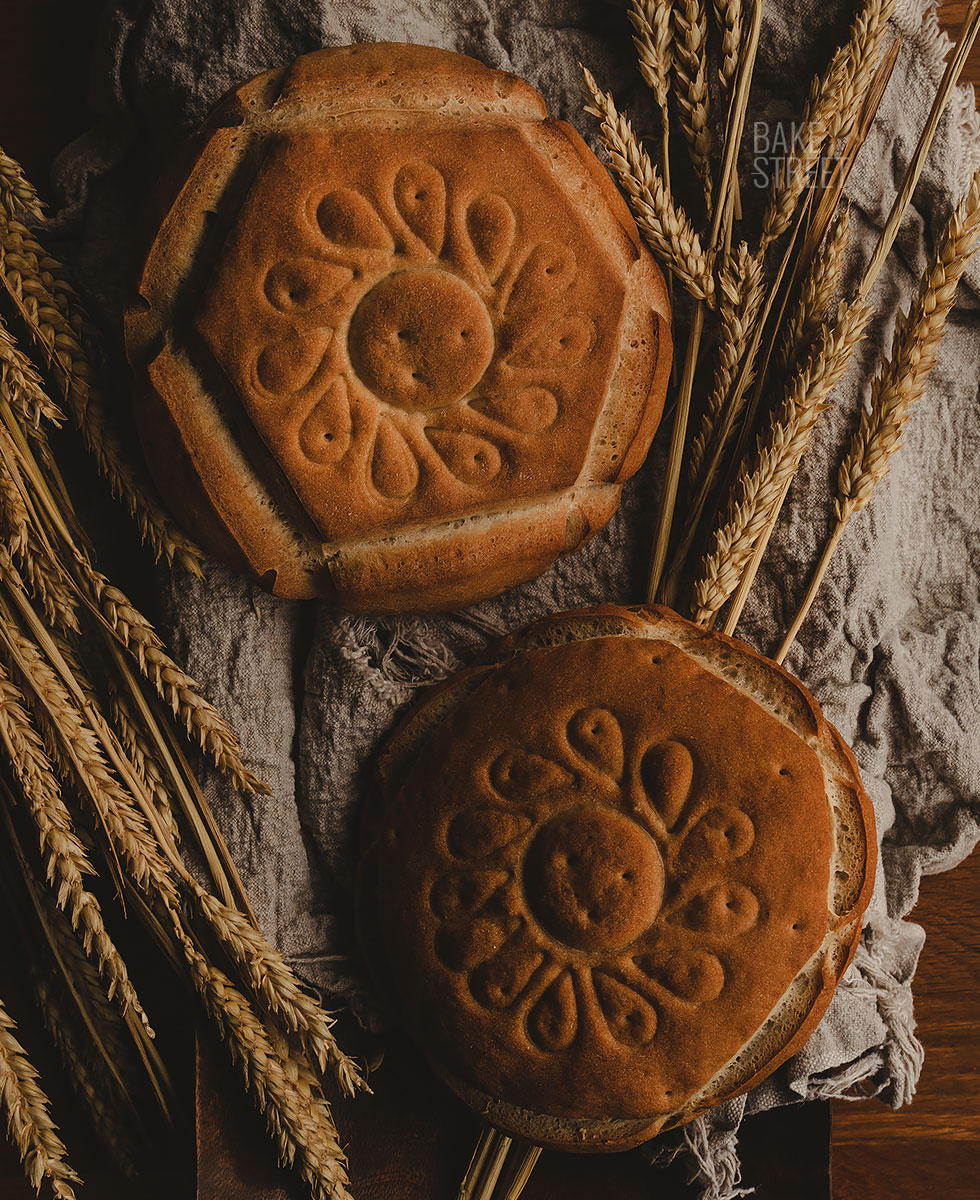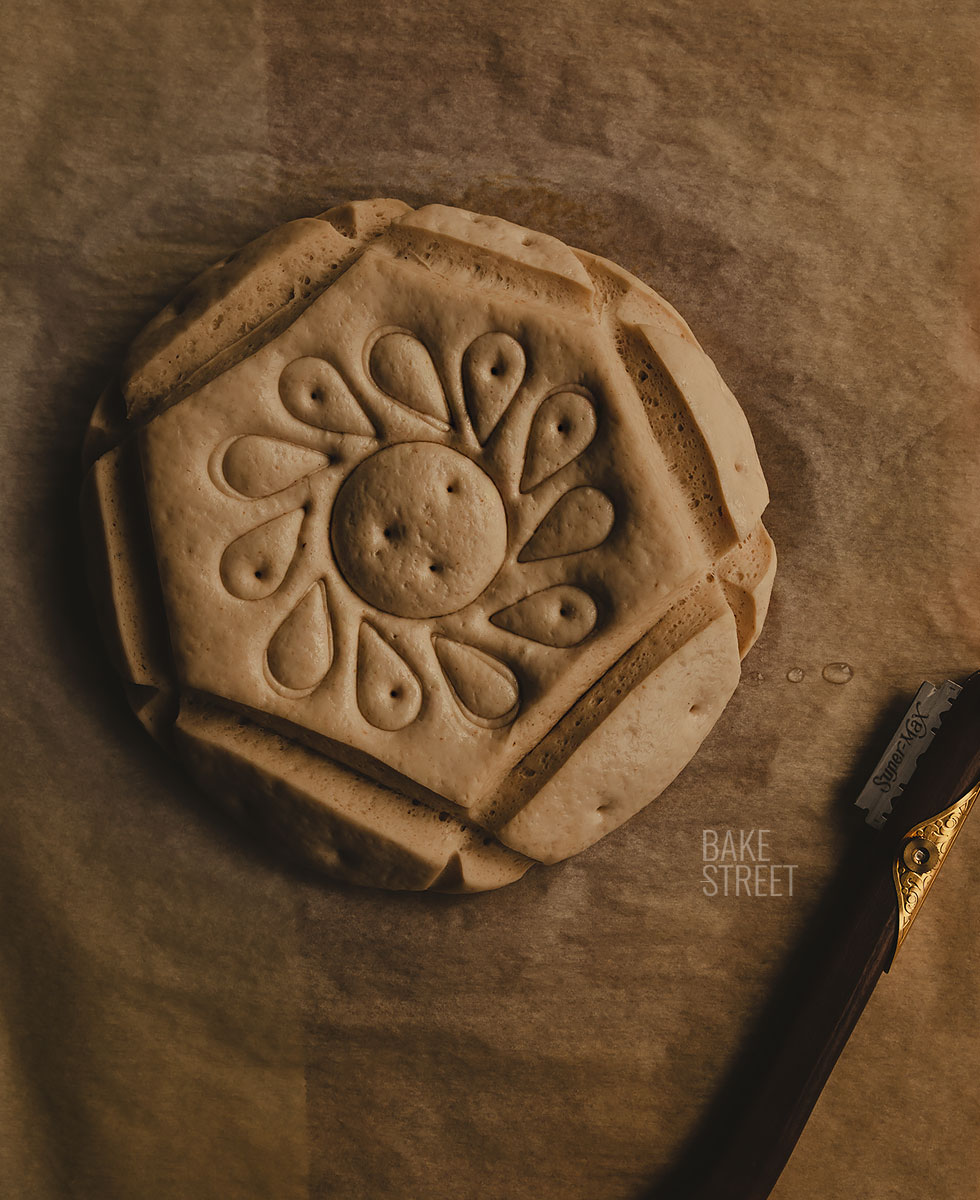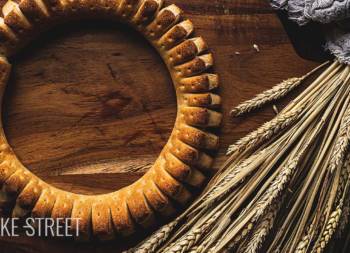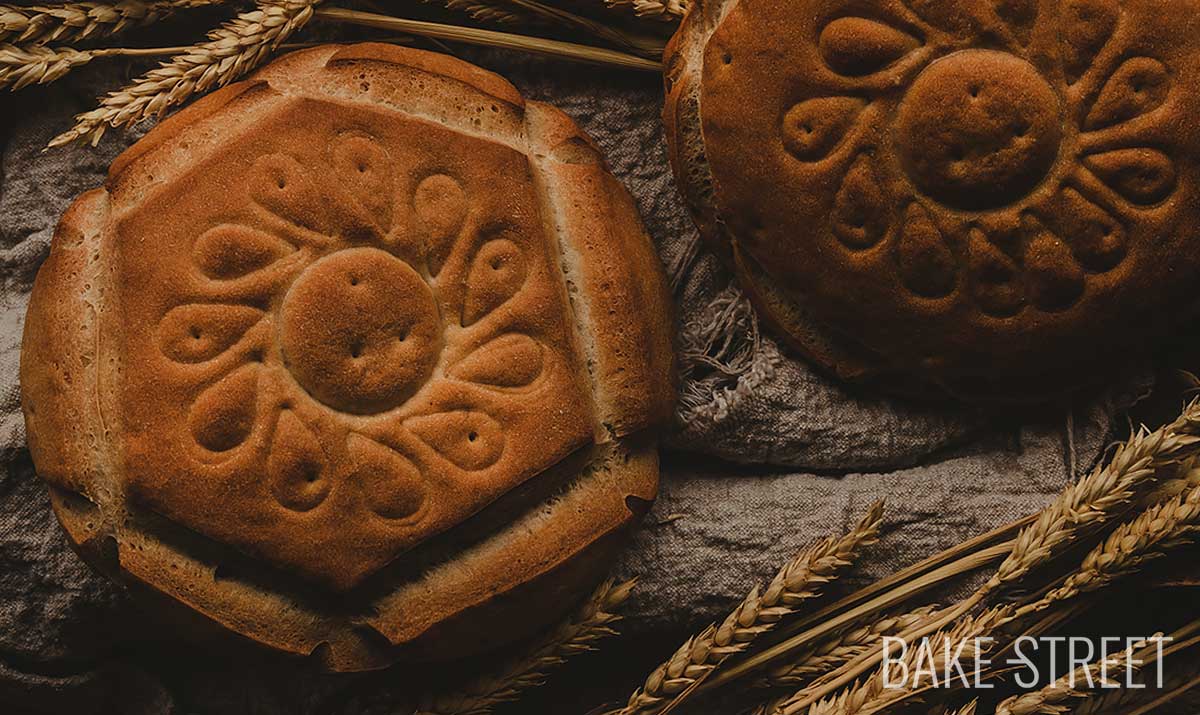
Lechuguino Bread, traditional from Valladolid
This summer I was lucky enough to unexpectedly get my hands on a Lechuguino Bread. To begin with, the name alone fascinated me. So rustic and so old-fashioned, it touched my heart. Then its appearance, very striking, in which you could appreciate that there was a very dedicated manual work behind it and, surely, with history. Finally, and most importantly, its flavor, aroma and texture. It is impossible not to fall in love.
I knew that as soon as possible, because we were on vacation, I would start looking for information about it and how to make it at home. I have to say that I have searched a lot for the characteristic stamp of this bread without success. Hence I had to adapt its design to something more homemade. Forgive me in advance for those of you who are more traditional. But, we are not misguided because this bread, originally, was marked with an old key.
Traditional bread from Valladolid, Spain.
Before the bread tormentors arrived, those who created breads made with low quality flours, with hardly any flavor or with a short shelf life due to an abusive use of yeast, there was a culture of bread in which the love and passion of those who made it could be appreciated. Hours of dedication and care were dedicated to a product that, on a daily basis, was part of every household’s table. People could taste a product full of love.
Juan Olivares, the last traditional baker in Valladolid, had his oven and his home in the same place as his grandparents, but after his retirement there was no one to take over his bakery. However, we inherited a rich emotional heritage, not only of bread, but also of many traditional sweets. This gastronomic heritage was carried on for several generations.
Liso, candeal, bollos leche, tortas de aceite o anís, las tortas de coscarón, wonderful breads that served as a lunch box for omelettes with peppers, steaks…
The current times have changed the desire to eat for the fear of getting fat, in addition to the appearance of prejudices that made bread the culprit of overweight and bad eating habits. Without forgetting false myths that brought the rush in its manufacture.
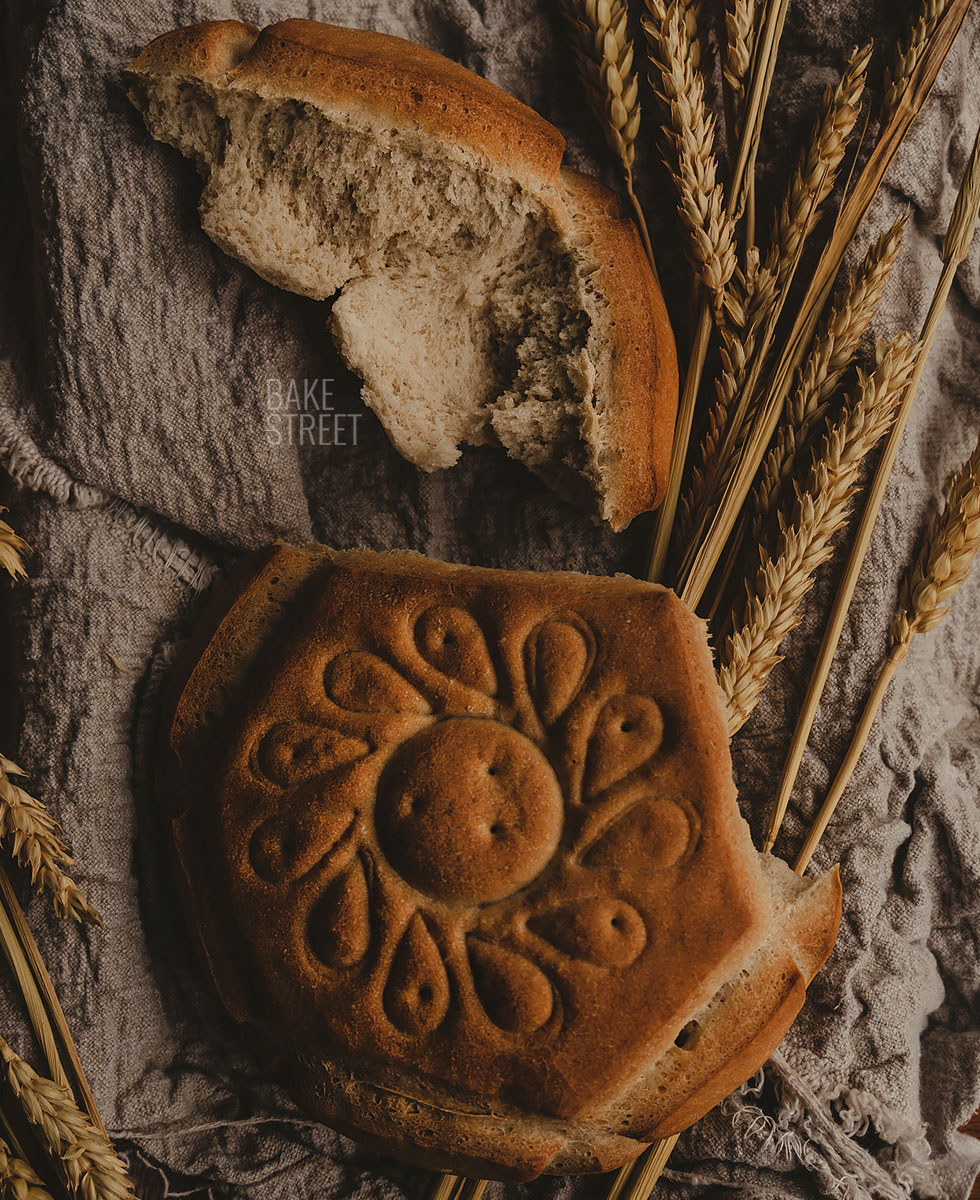
In this context, the Provincial Association of Bread Manufacturers and Expenders of Valladolid was born in 1978.
This was created with the need to ensure the quality and identity of the historical gastronomic heritage that had always given fame and prestige to the province, as evidenced by written testimonies since the ninth century. In addition to being worthy of exporting in the 16th century its elaboration process, which served as an example and model, with the pioneering use of the “sobadera” or “rolos” machine for its preparation.
The Ordinances in force from 1549 to 1886, as well as later regulations, testify to the care imposed by the authorities for centuries on wheat, flour and bread. Production, weight, formats and prices were controlled even after the government ended the rationing imposed by the Civil War in 1952. This highlighted the strategic importance of a sector that was not completely liberalized until 1989.
This market freedom gave rise to an unprecedented crisis due to the unfortunate confluence of changes in eating habits and competition based on lower prices, with the consequent drop in product quality.
In 2001, the Bread of Valladolid Guarantee Brand began to be developed and was finally approved in September 2004. This process was the result of years of hard work, becoming the First Bread Guarantee Mark in Europe and thus providing a certified and endorsed quality granted for the first time to a staple consumer product that is also typically vallisoletano (from Valladolid).
Pan Lechuguino.
Lechuguino is a Spanish variety of bread similar in appearance to a boule, round, but flat and with a stamped decoration reminiscent of a flower or rosette. This variety of bread is typical of the Castilian provinces of Valladolid and Palencia (Spain). It is made with bread flour, approximately W=130, water, salt and yeast or sourdough. Its weight can be around 250-500 g.
It is characterized by a thin crust, golden and shiny, very soft to the touch, slightly crunchy and with a white, tight, refined and delicate crumb. It is undoubtedly the most popular variety of bread from Valladolid.
The Royal Academy defines lechuguino as “A young person who is very composed and rigorously follows fashion”.
In common parlance, lechuguinois a bread that takes great care of its appearance, hence the name of the bread. The decoration of lechuguino bread can vary with different geometric motifs; in a homemade way, its drawings are made using a spoon or hoop.
However, the artisan bakeries of Valladolid maintain the traditional method of marking the scalloped profile, using bread stamps.
The quality of this bread derives from the use of very good quality flours. As early as 1513, the best wheat grains (white, broken, with a floury tendency and from the last harvest) were reserved for making the “lechuguino” bread.
According to Antonio Gimeno Gómez, in El pan de Valladolid;
“Without any artifice [bakers] managed to implement a type of bread known by the name of lechuguino, in which white flour takes precedence, without the need to resort to corn, buttermilk or even the addition of boiled potato, ingredients used in other regions to enhance the flavor of this food.”
It seems that the lechuguino bread is on its way to extinction since its elaboration process requires skill and not all bakers are willing to make it. It is one of the 15 bread recipes that the Spanish Confederation of Bakery Organizations (CEOPAN) pointed out as necessary in a recovery plan.
Nowadays, it is common to use other types of non-candeal flours to make lechuguino, since the cultivation of candeal wheat is disappearing. In my case, I make use of two different types of flour to make this bread, since I could not find candeal flour.
Characteristics of Valladolid bread.
- It must be made with flour milled in flour mills of Castilla y León, complying with defined characteristics. One of the recommended flour mills is Harina Tradicional Zamorana, a Guarantee Mark that certifies the quality, composition, geographic origin, technical conditions and elaboration method of its flours.
- A mixture with rye is used, in rustic and riche.
- It must be elaborated with sourdough and carried out with long fermentations.
- It must bear its stamp on the dough and be labeled and numbered, given that it belongs to a controlled production.
Types of Bread from Valladolid.
Candeal: lechuguino, “de canteros”, “de cuadros” and “depolea“.
Lechuguino bread is the bread of Valladolid par excellence. It is round, flattened, with a very white and uniform crumb, with a pattern of concentric circles that used to be made by hand with the help of the eye of those old canutillo keys. Its name comes from its neat appearance like that of the elegant gentlemen of the time.
Canteros breads and those of four or eight quarrymen, differ from the lechuguino by their aspect, in spite of using the same dough to be carried out. These breads are made by making cuts on the surface.
Polea or pulley bread is so called because of the lateral cut that surrounds it, giving it a shape similar to a pulley. Currently, it is not very easy to find unless it is made to order.
Semi candeales: Fabiola, tradicional o de picos.
La Fabiola, was created in 1962 and named in honor of Queen Fabiola, who filled the pages of the magazines of the time. Fabiola conquers hearts in the territories where it makes its way since the Manrique family, originally from Palencia, put it on the tables of Valladolid.
Flama: rústica y riche.
Pan de flama requires less time and work than candeal bread, but its result is equally extraordinary if it is well done. In fact, “rich” is the translation of the French word “riche” by which it is known.
| INGREDIENTS | % BAKER'S | SOURDOUGH | REST | TOTAL |
|---|---|---|---|---|
| AP flour | 52 % | 60 g | 200 g | 260 g |
| Cake flour | 48 % | 240 g | 240 g | |
| Yeast | 1,6 % | 8 g | 8 g | |
| Water | 54 % | 60 g | 210 g | 270 g |
| Salt | 2,2% | 11 g | 11 g |
Recipe Lechuguino Bread
Ingredients for 2 units of approximately 400 g/piece, each one
SOURDOUGH:
- 120 g sourdough, 100% hydrated
DOUGH:
- 200 g all purpose flour
- 240 g cake flour
- 120 g sourdough, 100% hydrated
- 210-215 g water
- 8 g fresh yeast or 2,6 g dry yeast
- 11 g salt
MATERIAL WE WILL NEED:
- kneading machine (optional)
- digital scale
- scraper and spatula
- rolling pin
- baking paper
- knife or lame
- round or teardrop-shaped cookie cutters (optional)
- wooden skewer
- spray bottle (optional)
- pastry brush for brushing with water
- steel or stone plate (optional, but recommended)
Instructions
Prepare sourdough (8:30 am).
- Refresh sourdough in a 1:2:2 ratio to 100% hydration.
- The time it takes to double will depend on the outside temperature, as well as its activity and strength. In my case it was ready in 5 hours at 77ºF/25ºC.
Prepare dough for bread (13:30 pm).
- In a large bowl add the two types of flour, together with sourdough and water. Mix the dough, at the beginning we can do it with the help of a scraper or spatula to facilitate the integration of the ingredients.
- Once we have the dough, more or less amalgamated, incorporate salt and mix again.
- Transfer to a clean work surface, without any flour, and begin to knead. We will perform the hard kneading, the one I show you in the video, since its hydration will not allow us to carry out another type of kneading.
- We will combine kneading with resting, in this way the dough will develop the gluten without the need to work it excessively. Knead 2-3 minutes and let it rest for 2-3 minutes. The dough does not have to be 100% developed, but it will facilitate the refining process if we have achieved a good development previously.
- After the first kneading and rest, add yeast and knead again to integrate it. The reason for incorporating it later is to delay its leavening activity in the dough. Once it comes in contact with the dough and we begin to knead and rest, it will start to do its work.
Refine dough (14:00 pm).
- Here comes the laborious part of the process because we must refine the dough to get a good result in our bread. I'm not going to lie to you... It is a process that takes quite a while and requires arm strength. We will combine this process with resting to make it more bearable.
- Stretch the dough with the help of a rolling pin, it is not necessary to achieve a specific measure. To guide us a little, we will try that the dough has an approximate thickness of 1 cm.
Fold like a triptych (do you remember the process of stiff sourdough? Well, here we will work in the same way) and stretch the dough again to fold it again. Our goal is to achieve a dough with a smooth and soft texture. - In total I did this step 10-12 times, which will let you know that the refining process took me about 65-70 minutes. During this process we will make rests so that the dough relaxes and facilitates the refining process. If we do not let the gluten relax between folds, the dough will be very tense and that will make the stretching/refining process very difficult.
- When we make the rests, you should always cover the dough with film, otherwise the surface will dry and crack when stretched.
- The result is worth it because the dough is incredibly pleasant to the touch.
Divide and preshape (15:15 pm).
- Once we have our dough refined and beautiful, you should know that the worst is over. What comes next is pure enjoyment.
- Divide the dough into two equal pieces, about 395-400 g. Remember that if there are scraps of dough, we must place them in the piece so that it always remains inside when we preshape it.
- Preshape the piece trying to shape it into a boule (ball), it will not be easy to join the dough due to its low hydration. Patience.
- Cover with film and let it rest for 15 minutes. It is important that the dough is relaxed so that when shaping the bread, it facilitates the process.
Shaping lechuguino breads (15:30 pm).
- Take one of the pieces, the other one we let it covered with film.
- To shape the bread, we will only have to flatten it with the help of a rolling pin. We must form a disc of 17 cm in diameter and a thickness of 1.3-1.5 cm.
- At this point we can score the bread and let it rise, I recommend it, or score it just before baking the pieces. In my case I did each one in a different way and I liked, much more, the result with the cuts before the final fermentation.
- Make several cuts near the ends of the bread, as shown in the video.
- Place on a tray lined with baking paper. Spray lightly with water and cover with film.
- Repeat the same process with the other piece.
- Make a final fermentation for 1 and 1/2 hours at 77ºF/25ºC. The dough will increase a little its volume, but without doubling. It is a type of bread that should enter the oven a little short of final fermentation.
Bake lechuguino bread (17:05 pm).
- Preheat the oven to 392ºF/200ºC with heat up and down. Place the tray, stone or steel plate in the lowest part of the oven. Ideally, preheat for 15 minutes before. If you use a stone, I recommend preheating for longer since it takes longer to reach temperature.
- This type of bread is baked without steam.
- Brush the surface of the bread with water, avoiding cuts.
- With the help of cutters, mark the surface of the bread as I show you in the video. Originally it is done with a metal stamp, but not having it, we simulate its appearance with cutters. With a toothpick or skewer, prick different parts of the surface.
- Place in the oven. Slide on the baking sheet, with the baking paper included.
- Bake for 28 minutes, you will notice that it acquires a beautiful golden color.
- Remove from the oven and let it cool completely on a wire rack.
- Repeat the same process with the other bread.
This type of bread is ideal for same-day consumption, at most until the following day. 
Notes
- To make the lechuguino bread, I decided to use sourdough. But, if you do not want to use sourdough, you can make use of a pre-ferment just as I did for the candeal bread crown. It is very important that, in case of using another type of preferment other than sourdough, you respect the hydration of the preferment. If you change it, you will have to modify the dough formula to respect the final hydration of the bread.
- Can it be done without preferment? Yes, it can, but keep in mind that the result will be a bread with less flavor. In that case, we must add to the final dough the amount of water, flour and yeast that we omit from the preferment. And proceed with the process from the moment we prepare the bread dough.
- These candeal bread is made with a flour I bought at the supermarket. It has a strength of W=200 and cake flour W=80. If you don't find this flour, it's OK, you can use another flour of strength that you have at your disposal. Bread flour or plain flour.
- I remind you that in this post I tell you how to calculate the strength of a flour. In my case I used it to achieve a strength of W=150. You can even use a lower force, between W=150-180. In that case, you will probably have to modify the final amount of water in the dough, reducing it to 240-250 g. But this does not affect the hydration of the preferment.
- Don't we do autolysis on this bread? No, in this variety of bread the process of autolysis is not carried out. It is a low hydration bread that we must work by hand to achieve the desired texture and refinement.
- The amount of final water will depend on the strength and absorption capacity of your flour. I advise you to add the lowest amount that I detail in the ingredients and, if necessary, add more until the whole is complete. Doughs are always rectified with water, never ever with flour.
- You can use fresh yeast or dry yeast, the result will be good in both cases. But keep in mind the proportion to be used in relation to the yeast you use. And remember that for every gram of dry yeast you use 3 grams of fresh yeast.
- It is important that you knead well to get a good result. If you get tired or the process becomes tiresome, remember that we must take a break. Rest continues to hydrate the protein and therefore continues to "knead" or facilitate the process of kneading with the consequent development of gluten.
- The refining process is hard, I won't deny you that. Do you still think it can be done with a pasta machine? Maybe it could. In my case I make it with stiff sourdough, but this bread has so much dough that you would have to divide the dough into pieces and refine them individually to be able to do it in a pasta machine. Maybe it's a bit much work, but it can be an option for anyone who wants to keep it in mind.
- To get a good result, the ideal is to make 10-12 folds to achieve a good refining of the dough. Cheer up!
- Respect the raising times and DO NOT force them with crazy temperatures. Otherwise we will get a bad tasting bread.
- The outside decoration is carried out with a specific stamp or tampon. In my case, I don't have it (I have looked for it, but without success). So I decided to texturize the outside with cutters to try to imitate its appearance.
- The bread must be pricked, after marking it, in order to avoid small air pockets during baking.
- This bread will keep in perfect condition the same day it is baked. The next day it can be eaten, but the texture will not be the same. If it is a lot of bread, it can be frozen in the same way we freeze other breads.

If you like bread as candeal, this Lechuguino bread will fascinate you. I recognize that it is a laborious bread to carry out, the refining process is hard and requires patience. But if we combine this step with resting, not very long since the bread, as soon as it comes into contact with the yeast, starts its fermentation process, it will be much more bearable.
For my part, I have to say that this is one of my favorite varieties of bread. It always reminds me of when I was little, my grandmother always had this bread at home, and she used to give it to us as a snack with chocolate ounces, the best snacks of my life!
I hope you dare to prepare it at home and let me know how it went.
Lots of love,
Eva
Sources: Ateneo de Valladolid, Wikipedia
